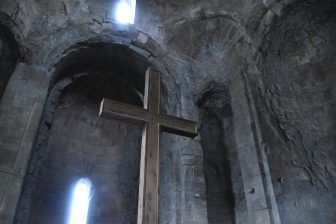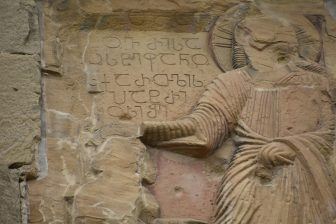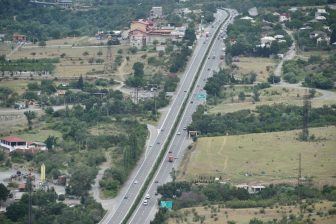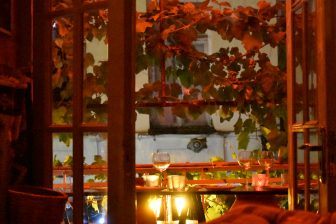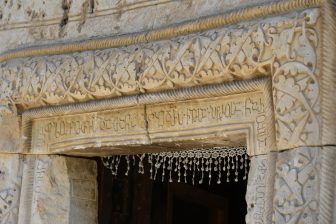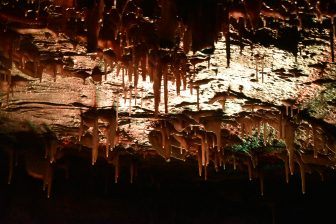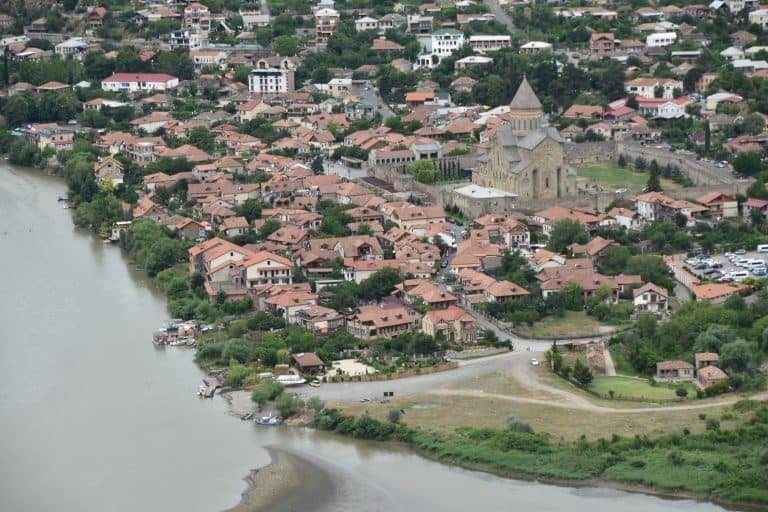
[ July, 2018 ] On the second day in Georgia, the country in Caucasus, we had an excursion to Mtskheta.
Mtskheta is a town located about 25km north of the capital city, Tbilisi, and the population is about 8,000.
It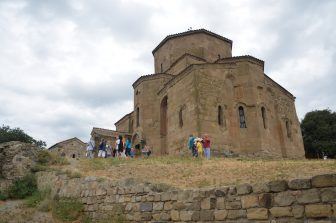
First, we visited Jvari Church on top of the hill where we could see the town located at the point of the Mtskvari River, which flows from Turkey through Tbilisi to the Caspian Sea and meets the Aragvi River, which flows from the north.
Here, our guide, Ana, told the story about how this country became Christian.
In the ancient time, this area was ruled by the Kingdom of Iberia and the first person who came here to try and convert the people to Christianity was one of the Apostles, Andrew, though he did not succeed his task.
Later, a woman called Nino, who lived in Cappadocia in Turkey met the Virgin Mary in a dream and Mary ordered her to go to the Kingdom of Iberia to spread Christianity there, so she came.
When she was doing the missionary work, the then king, Mirian, went to hunt one day.
While he was hunting, suddenly it became pitch-black and he lost his way.
He prayed to various gods, but nothing happened.
When he tried Nino’s god, the sun came out and he found the way.
Because of this experience, he became a Christian and the country became Christian, too.
That was 327 AD.
Ana said that, therefore, Georgia is the third Christian country, following Armenia and Rome.
But in fact, Rome only officially approved Christianity in 313, and the year it became a Christian country was 380, so Georgia was the second.
King Mirian and Nino built a huge cross on top of this hill to show that it was a Christian country.
Later, a duke in the town built the church on this spot in the end of the 6th century.
This is the Jvari Church and Jvari means cross.
Apparently, if you see this church from above, its shape is a cross.
Inside the church, there is a replica of the original cross standing in the centre.
The portrait of Saint Nino is there, too.
Nino’s portrait always has the cross made of vine branches that she was given by the Virgin Mary and tied with her own hair.
On the exterior wall, there is a sculpture depicting the duke being blessed.
The letters written there are the old Georgian alphabets, which are now used only by clergymen.
By the way, from this hill, we could clearly see the Military Highway, the road from Tbilisi to the Russian border.
According to Ana, this road was already mentioned in the Greek documents of the first century AD.
After Russia invaded Georgia, all the Russian troops came through this road and a lot of battles happened around here, so this road has this grave name.

